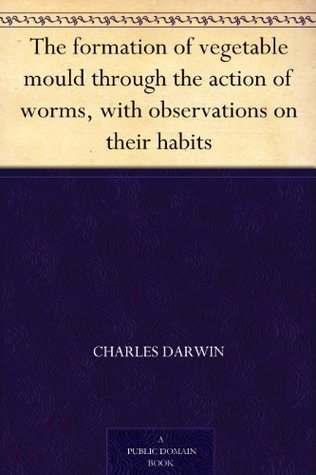What do you think?
Rate this book


344 pages, Kindle Edition
First published January 1, 1881
A worm after swallowing earth, whether for making its burrow or for food, soon comes to the surface to empty its body. The ejected earth is thoroughly mingled with the intestinal secretions, and is thus rendered viscid. After being dried it sets hard. I have watched worms during the act of ejection, and when the earth was in a very liquid state it was ejected in little spurts, and when not so liquid by a slow peristaltic movement. It is not cast indifferently on any side, but with some care, first on one and then on another side; the tail being used almost like a trowel. As soon as a little heap is formed, the worm apparently avoids, for the sake of safety, protruding its tail; and the earthy matter is forced up through the previously deposited soft mass. The mouth of the same burrow is used for this purpose for a considerable time.
the maxim “de minimis lex non curat,” [the law does not care about trifles] does not apply to science
Here we have an instance of that inability to sum up the effects of a continually recurrent cause, which has often retarded the progress of science, as formerly in the case of geology, and more recently in that of the principle of evolution.
I have always thought that the great merit of the Principles, was that it altered the whole tone of one's mind & therefore that when seeing a thing never seen by Lyell, one yet saw it partially through his eyes
the worm inserts the stretched out and attenuated anterior extremity of its body into any little crevice, or hole; and then, as Perrier remarks, the pharynx is pushed forwards into this part, which consequently swells and pushes away the earth on all sides. The anterior extremity thus serves as a wedge.
The pointed anterior extremity of the body, after being brought into contact with an object of this kind, was drawn within the adjoining rings, so that it appeared truncated and became as thick as the rest of the body. This part could then be seen to swell a little; and this, I believe, is due to the pharynx being pushed a little forwards. Then by a slight withdrawal of the pharynx or by its expansion, a vacuum was produced beneath the truncated slimy end of the body whilst in contact with the object; and by this means the two adhered firmly together.
When we behold a wide, turf-covered expanse, we should remember that its smoothness, on which so much of its beauty depends, is mainly due to all the inequalities having been slowly levelled by worms. It is a marvellous reflection that the whole of the superficial mould over any such expanse has passed, and will again pass, every few years through the bodies of worms. The plough is one of the most ancient and most valuable of man's inventions; but long before he existed the land was in fact regularly ploughed, and still continues to be thus ploughed by earth-worms. It may be doubted whether there are many other animals which have played so important a part in the history of the world, as have these lowly organised creatures. Some other animals, however, still more lowly organised, namely corals, have done far more conspicuous work in having constructed innumerable reefs and islands in the great oceans; but these are almost confined to the tropical zones.